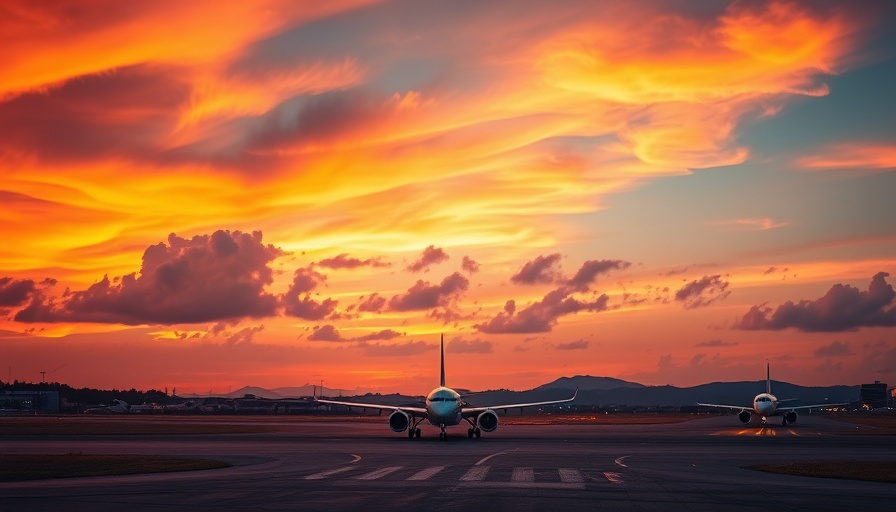
Navigating Turbulent Skies: Challenges Facing the Global Aviation Sector
As the world of aviation enters 2025, it finds itself on a flight path filled with unexpected turbulence. Delayed aircraft deliveries, persistent trade disputes, and an unstable geopolitical climate have conspired against airlines aiming to capitalize on the surge in travel demand.
Aircraft Delivery Delays: A Bump in the Road
The root of the aviation sector's struggles lies predominantly in significant delays in aircraft deliveries. The international airline authority, under the guidance of IATA, has voiced concern over what they describe as "unacceptable" hold-ups. With only 74% of expected aircraft deliveries made, airlines are faced with an uphill battle to meet an untapped travel demand projected to reach nearly 5 billion passengers in 2025. This gap highlights a crucial turning point for industry players, who must adapt to these growing challenges and find solutions.
The Economic Landscape: Trade Wars and Turbulent Forecasts
The geopolitical tensions that have blossomed into trade wars are further complicating the scene. Airlines are navigating through rough economic waters, experiencing a downturn in profits that was previously forecast at $67.7 billion, now adjusted down to an anticipated $66 billion by the industry body. These disruptions, particularly from the U.S.-China trade tensions, are impacting airline profits and operational efficiency, raising questions about sustainability in a landscape littered with tariffs and uncertainty.
Passenger Demand: The Silver Lining
Despite these hurdles, demand for leisure travel is holding firm, with travelers increasingly prioritizing experiences over material goods. The aviation sector remains a linchpin in the global economy, supporting more than 86 million jobs and accounting for around 3.9% of the world's GDP. As travelers become more aware of their environmental impact, there is a push towards greener options. More people are leaning towards sustainable travel experiences, seeking ways to lessen their carbon footprint while indulging in their desire for adventure.
A Commitment to Safety: Nearly Zero Fatalities
Amidst these challenges, the aviation industry has successfully maintained an impressive safety record. Only seven fatal accidents occurred over 40.6 million flights in 2024 — a testament to the industry's unwavering commitment to passenger safety. IATA's drive towards a "zero" accident rate is not just a goal but a reflection of the relentless efforts made by airlines and air traffic authorities alike, ensuring that every journey is as safe as possible.
Future Directions: Navigating Towards Sustainable Practices
Looking ahead, sustainability will play a pivotal role in how airlines rebuild and expand post-pandemic. Innovative practices such as investing in cleaner technologies and forging partnerships with sustainable initiatives are critical for airlines to adopt in order to meet the evolving expectations of environmentally conscious travelers. By prioritizing eco-friendly measures, the aviation industry can not only address current obstacles but also pave the way for a more sustainable future.
Conclusion: A Call to Reflect and Act
The challenges facing the global aviation sector are evident as it navigates a complex array of delivery delays and economic pressures. However, the steady interest in travel suggests a hopeful trajectory, presenting an opportunity for the industry to embrace sustainability and innovation. As travelers increasingly seek to make responsible choices, the aviation sector must rise to the occasion, adapting to new expectations and showing how it can positively impact the world. Let’s support and demand sustainable travel options, ensuring that our journeys today don’t hinder the ability of future generations to explore the wonders of the world.
 Add Row
Add Row  Add
Add 




Write A Comment